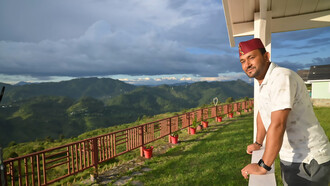The United States bought the Danish West Indies more than 100 years ago for $25 million in gold, renaming the territory the U.S. Virgin Islands (USVI). The U.S. got a good deal.
The pleasant tropical climate, attractive scenery, availability of good watersports (including diving and snorkeling) and proximity to the U.S. mainland make the U.S. Virgin Islands a popular vacation spot. The USVI is less than three hours by air from Miami, Florida, and no passport is required for U.S. citizens. Although the USVI is a U.S. territory, and English is the official language, there is a foreign feel to the islands. For example, the islanders still drive on the left-hand side of the street, which can confuse Americans. Stumbling upon a roaming prehistoric-looking iguana also may startle visitors.
Lush, tropical landscapes, turquoise water and an easygoing culture welcome visitors to this Caribbean archipelago. The hospitality industry is well-developed in the USVI, with an array of accommodations, restaurants and other diversions for vacationers.
Christopher Columbus in 1493 gave the islands the name Santa Ursula y las Once Mil Vírgenes (Saint Ursula and her 11,000 Virgins), in honor of the legendary St. Ursula and the 11,000 martyred virgins. The name was shortened to Las Vírgenes (The Virgins). Columbus also is reported to have named the nearby island of Virgin Gorda (the Fat Virgin), which he thought to be the largest island in the group.
The U.S. Virgin Islands is composed of three large islands—St. Thomas, St. John and St. Croix, as well as about 50 small islets and cays. There is a ferry service between the three main islands and the British Virgin Islands (BVI). The capital of the USVI is Charlotte Amalie, on St. Thomas. Steady year-round temperatures averaging between 24C (75F) and 28C (82F) and cooled by trade winds, make the USVI a popular destination, especially during winter months. The rainy season is from September through December, though I have visited during that time and encountered little rain.
The British and U.S. Virgin Islands enjoy a close relationship, and visitors to the BVI often fly through the USVI. Some of the islands are near enough to each other to be easily visible, and water transportation among the islands is readily offered. Seaplanes are available, as well.
The lucrative tourist industry eclipsed the previously prevalent sale of sugar cane, especially after slavery was abolished there in the 1800s. The islands present travelers with an array of delights. Although some people only visit the islands as day trippers from cruise ships, the gold is in chartering private boats, staying at a luxury resort, or renting a charming cottage or estate. Chartered boats give travelers opportunities to visit islets and cays without having to share the beach with anyone else. Another benefit is to be able to swim to beachside bars or be dropped off by a yacht’s dinghy.
Snorkelers are rewarded with up-close views of a variety of colorful fish, rays, turtles, eels, and corals. Sharks are visible, but uninterested in snorkelers. The seawater is warm and crystal clear. Caves, nooks, and interesting rock formations mark much of the coastline. The protected, calm waters are home to more than 500 fish species and 40 types of coral, a great deal of which can be seen in shallow waters with only a mask or goggles. Beware of the fire coral and long-spined sea urchins, which can sting if touched.
Geckos and iguanas are abundant on land but do not bother humans. More than 140 species of birds populate the islands. From the white sandy beaches, one may be entertained watching pelicans dive for fish. There are six national parks across the three main islands, and hiking trails offer beautiful panoramic views of the multi-hued waters and flowering fauna. The majestic flamboyant tree that graces the island with its brilliant orange flowers cannot be missed. Some people call them flame trees for their blazing color.
Duty-free shopping is popular in the USVI. Rum, perfume, art, pottery, and jewelry are popular buys. Dining options are abundant and varied. Caribbean cuisine includes fresh fish, johnnycake, callaloo, roti, and exotic fruit. A cocktail dubbed the Painkiller is a widely offered drink. International cuisine also is offered, and the scrumptious Italian food at Virgilio’s in St. Thomas is recommended. Sunset Grille, on a St. Thomas beach, offers gorgeous sunset views.
The USVI are Caribbean jewels that boast year-round pleasant temperatures, clear blue water, abundant sea life, powdery white sand, and numerous amenities. Impressionist artist, Camille Pissarro, who was born in St. Thomas, captured much of the USVI’s beauty in his paintings. You will no longer have to imagine the vistas he painted. Experience them yourself.















